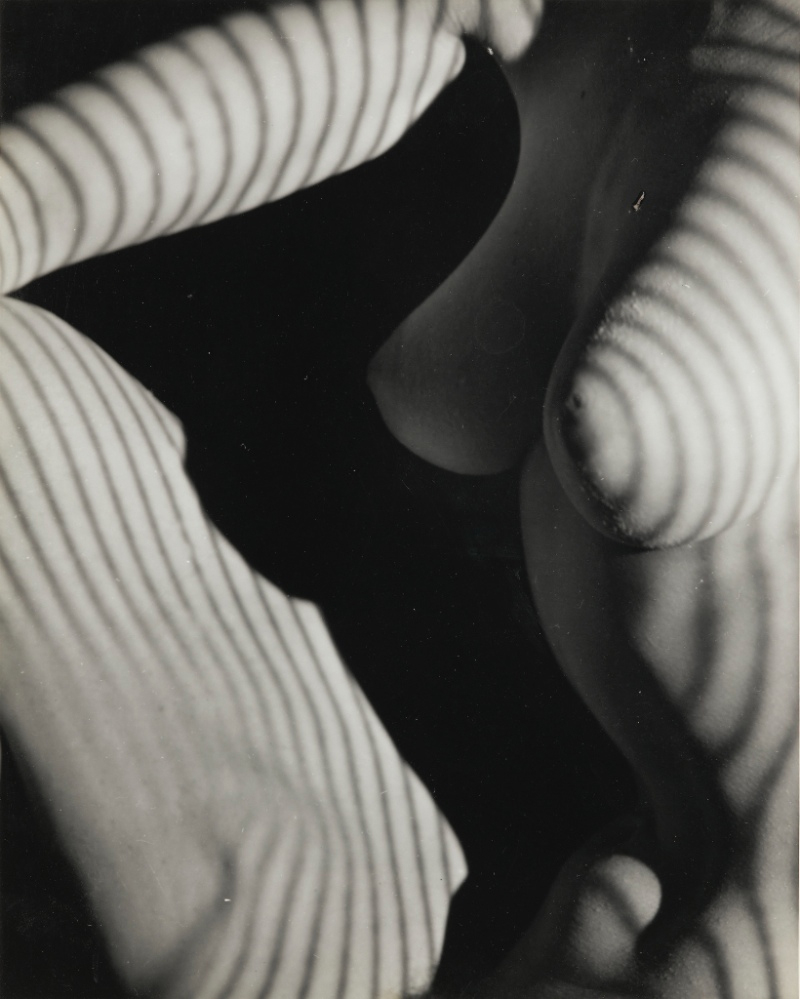Born in Berlin to a middle-class Jewish family, Erwin Blumenfeld became one of the greatest innovators of twentieth century photography. From his early black and white nudes to his colourful and glossy fashion photography of the 1950s and 60s, he consistently pushed both stylistic and technical boundaries.
In 1923 Blumenfeld had set up a small shop in Zandvoort, Holland, where he discovered a fully equipped darkroom behind a boarded-up door. He began to photograph his customers, becoming an active part of the Dutch art scene. Blumenfeld’s earliest photographs were influenced by the Parisian avant-garde, news of which reached him through Surrealist journals such as Minotaure. He was especially influenced by the works of Man Ray, and quickly began his own experiments in his darkroom, using techniques such as multiple exposures and solarisation.
Moving to Paris to pursue a career as a professional photographer, Blumenfeld fell ever more under the influences of the avant-garde Surrealist circle. He paid little notice to photographic conventions and traditional practice, using innovative and unconventional techniques. He once stated that if the instructions on a new film roll said never to heat it above room temperature, he would immediately boil it. If it said never let it go below room temperature, he would place it in the freezer. This often resulted in striking and otherworldly images.
Through Blumenfeld’s long and varied career, the female nude is a constant. This photograph is an example of Blumenfeld’s capacity for innovation, and his fascination with the female form, highlighting the woman’s body through his use of light and shadow.
The photograph was taken in 1945, a few years after his move to New York, escaping the horrors of the Second World War, during which time Blumenfeld had been interned in several concentration camps. Upon his move to New York, Blumenfeld continued his commercial success working for both Harper’s Bazaar and American Vogue; his highly stylistic fashion photography helped shape the look of the 1940s and 50s
